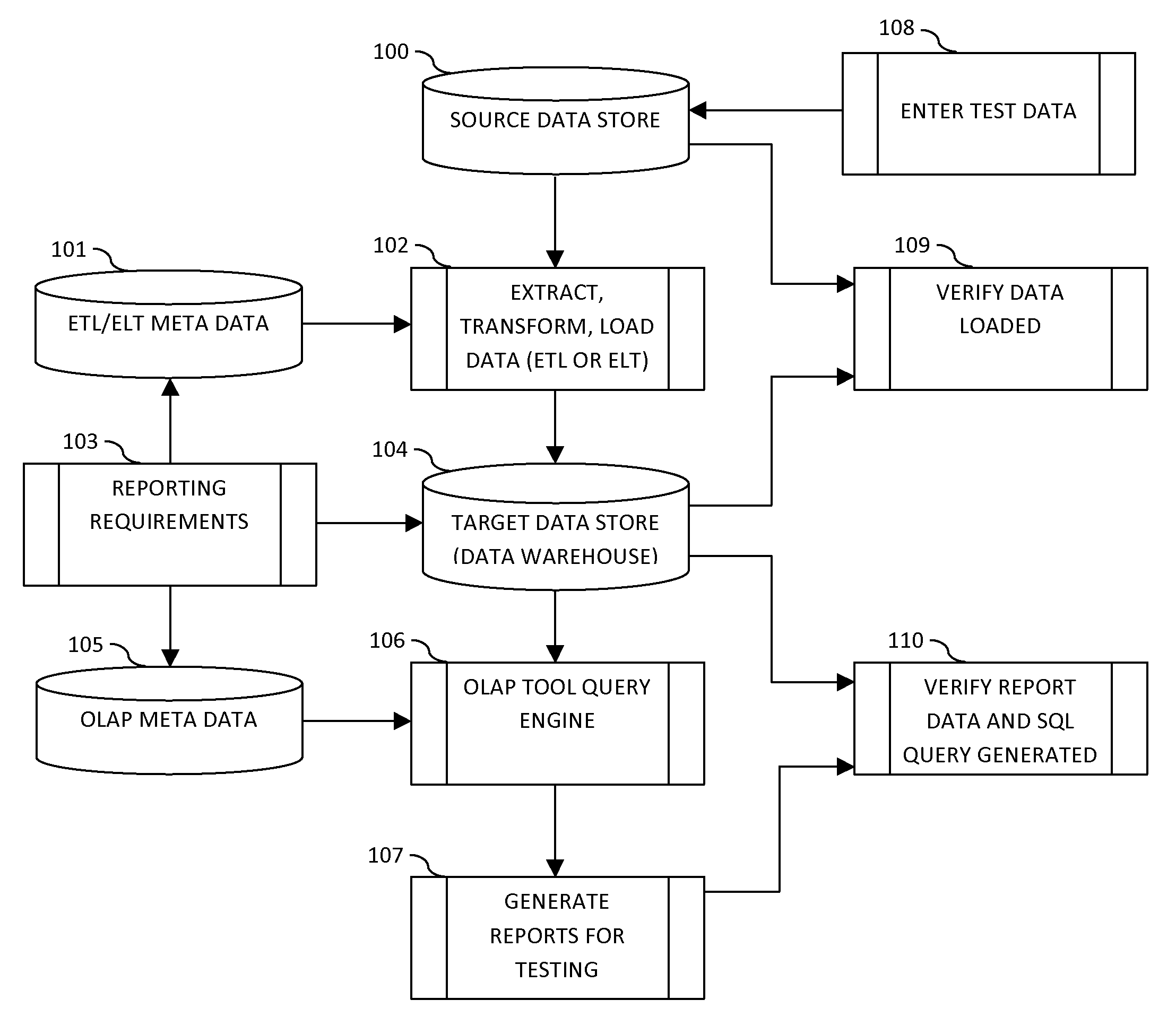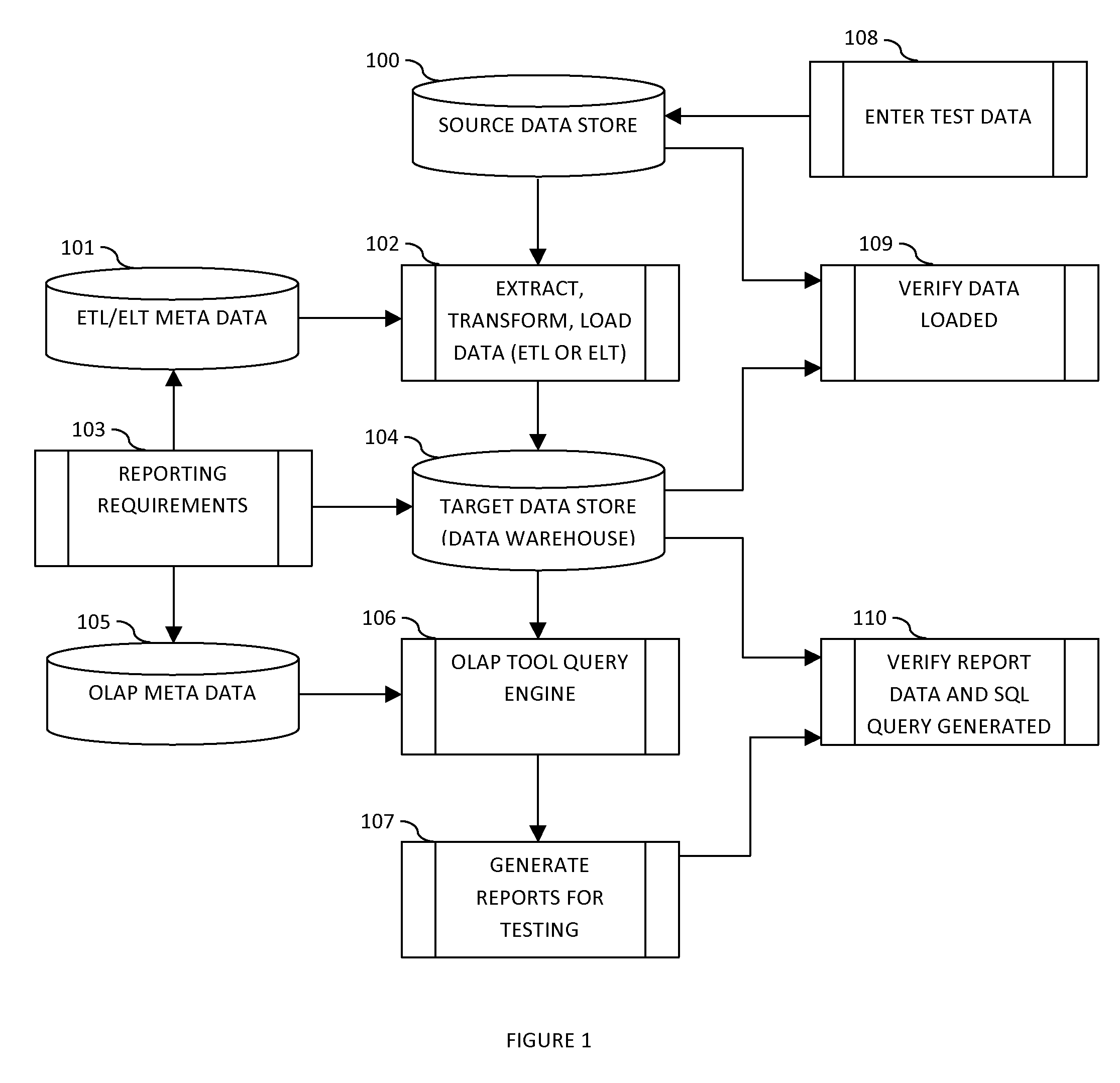Data extraction and testing method and system
a data extraction and data technology, applied in the field of automatic data testing, can solve the problems of difficult data integration project testing, complex implementation of data integration and business intelligence projects, and lack of existing techniques for data integration and business intelligence systems
- Summary
- Abstract
- Description
- Claims
- Application Information
AI Technical Summary
Benefits of technology
Problems solved by technology
Method used
Image
Examples
Embodiment Construction
[0026]In the following description, reference is made to the accompanying drawings that form a part hereof, and in which is shown by way of illustration specific embodiments in which the invention may be practiced. It is to be understood that other embodiments may be utilized and design changes may be made without departing from the scope of the present invention.
[0027]FIG. 2 shows how the present invention, in one embodiment, would fit in the testing process of an exemplary data warehouse project, such as the system illustrated in FIG. 1. In one embodiment of the present invention, the Test Configuration 200 automates the creation of sample test data 266 in the source data store 100 by either generating the test data using a sample data store 265 or recording and playing the steps in the source system application interface to create new sample test data in the source data store 100. The present invention improves the current testing processes by, among other features, automating th...
PUM
 Login to View More
Login to View More Abstract
Description
Claims
Application Information
 Login to View More
Login to View More - R&D
- Intellectual Property
- Life Sciences
- Materials
- Tech Scout
- Unparalleled Data Quality
- Higher Quality Content
- 60% Fewer Hallucinations
Browse by: Latest US Patents, China's latest patents, Technical Efficacy Thesaurus, Application Domain, Technology Topic, Popular Technical Reports.
© 2025 PatSnap. All rights reserved.Legal|Privacy policy|Modern Slavery Act Transparency Statement|Sitemap|About US| Contact US: help@patsnap.com



